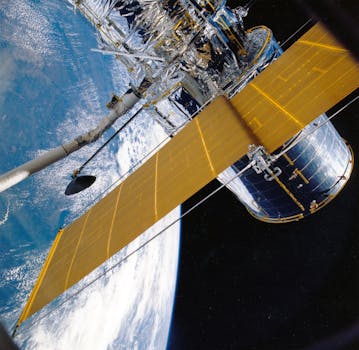Beyond Earth: How Recent Advances Are Shaping Satellite Telecommunications

Beyond Earth: How Recent Advances Are Shaping Satellite Telecommunications
Recent advances in satellite telecommunications are transforming the way we communicate beyond Earth’s surface. With improved technologies and increased investment, satellite communications are becoming more accessible and efficient. Beyond Earth, the latest developments are shaping the future of satellite telecommunications, enabling faster, more reliable, and more secure connections.
The Evolution of Satellite Telecommunications

Satellite telecommunications have come a long way since the launch of the first commercial communications satellite, Intelsat 1, in 1965. Over the years, advancements in technology have led to improved performance, increased capacity, and reduced costs. Today, satellite communications play a vital role in global telecommunications, providing connectivity to remote and underserved areas, supporting emergency communications, and enabling global navigation and timing.
Recent advances in satellite telecommunications are driven by several factors, including the development of new technologies, such as high-throughput satellites (HTS) and very high-throughput satellites (VHTS), which offer significantly increased capacity and faster data rates. Additionally, the use of advanced materials and manufacturing techniques has led to the development of smaller, lighter, and more efficient satellites, reducing launch costs and increasing the number of satellites that can be launched simultaneously.
Advances in Satellite Technology

Several recent advances in satellite technology are shaping the future of satellite telecommunications. One of the most significant developments is the use of HTS and VHTS, which offer significantly increased capacity and faster data rates. These satellites use multiple spot beams to reuse frequencies and increase capacity, allowing for more efficient use of spectrum and higher data rates.
Another significant advancement is the development of satellite constellations, which involve launching multiple satellites into low Earth orbit (LEO) to provide global coverage. These constellations offer several advantages, including improved latency, increased capacity, and enhanced resilience. Companies such as OneWeb, SpaceX, and Amazon’s Kuiper Systems are investing heavily in satellite constellations, with plans to launch thousands of satellites in the coming years.
Implications and Applications

The recent advances in satellite telecommunications have significant implications for various industries and applications. One of the most significant benefits is the provision of connectivity to remote and underserved areas, where traditional terrestrial infrastructure is lacking. Satellite communications can provide Internet access, voice, and data services to these areas, bridging the digital divide and enabling economic development.
Satellite telecommunications also play a critical role in emergency communications, providing connectivity during natural disasters and other crises. Satellite-based systems can quickly restore communications, enabling emergency responders to coordinate their efforts and respond to emergencies more effectively.
Conclusion

In conclusion, recent advances in satellite telecommunications are transforming the way we communicate beyond Earth’s surface. With improved technologies and increased investment, satellite communications are becoming more accessible and efficient. The implications of these advances are far-reaching, with significant benefits for various industries and applications. As satellite technology continues to evolve, we can expect to see even more innovative applications and services, further expanding the possibilities of satellite telecommunications.
See more:





